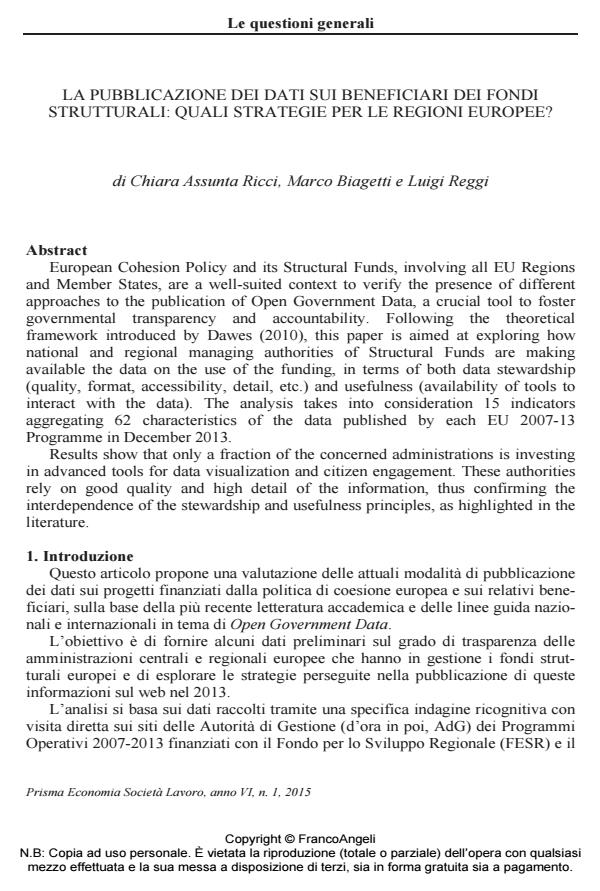La pubblicazione dei dati sui beneficiari dei fondi strutturali: quali strategie per le regioni europee?
Titolo Rivista PRISMA Economia - Società - Lavoro
Autori/Curatori Chiara Assunta Ricci, Marco Biagetti, Luigi Reggi
Anno di pubblicazione 2015 Fascicolo 2015/1
Lingua Italiano Numero pagine 17 P. 64-80 Dimensione file 129 KB
DOI 10.3280/PRI2015-001006
Il DOI è il codice a barre della proprietà intellettuale: per saperne di più
clicca qui
Qui sotto puoi vedere in anteprima la prima pagina di questo articolo.
Se questo articolo ti interessa, lo puoi acquistare (e scaricare in formato pdf) seguendo le facili indicazioni per acquistare il download credit. Acquista Download Credits per scaricare questo Articolo in formato PDF

FrancoAngeli è membro della Publishers International Linking Association, Inc (PILA)associazione indipendente e non profit per facilitare (attraverso i servizi tecnologici implementati da CrossRef.org) l’accesso degli studiosi ai contenuti digitali nelle pubblicazioni professionali e scientifiche
European Cohesion Policy and its Structural Funds, involving all EU Regions and Member States, are a well-suited context to verify the presence of different approaches to the publication of Open Government Data, a crucial tool to foster governmental transparency and accountability. Following the theoretical framework introduced by Dawes (2010), this paper is aimed at exploring how national and regional managing authorities of Structural Funds are making available the data on the use of the funding, in terms of both data stewardship (quality, format, accessibility, detail, etc.) and usefulness (availability of tools to interact with the data). The analysis takes into consideration 15 indicators aggregating 62 characteristics of the data published by each EU 2007-13 Programme in December 2013. Results show that only a fraction of the concerned administrations is investing in advanced tools for data visualization and citizen engagement. These authorities rely on good quality and high detail of the information, thus confirming the interdependence of the stewardship and usefulness principles, as highlighted in the literature
Chiara Assunta Ricci, Marco Biagetti, Luigi Reggi, La pubblicazione dei dati sui beneficiari dei fondi strutturali: quali strategie per le regioni europee? in "PRISMA Economia - Società - Lavoro" 1/2015, pp 64-80, DOI: 10.3280/PRI2015-001006